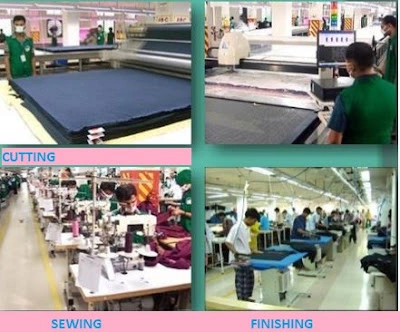Time Study is part of work-study. It is a working time-measuring method for a process. Time Study defines the necessary time for a specific task in any operation. So this study is very important for any manufacturing industry. In this competitive world of apparel manufacturing, optimizing production efficiency is paramount. Time study, a methodical analysis of work processes, emerges as a critical tool for enhancing productivity, reducing costs, and improving overall performance. This article delves into the significance of time study, its implementation, the required equipment, and the multitude of benefits it brings to the apparel manufacturing industry. This is the core responsibility of the IE department in the Garments Industry. Here I present How to do a Time Study in the Garments Industry below.
What is Time Study?
Time study is a systematic approach used to measure, analyze, and establish the standard time required to complete a specific task or operation. It involves observing and documenting each process of a work process, from start to finish, to determine the most efficient methods and identify potential bottlenecks. Time study enables companies to identify the best practices for completing tasks, ensuring that operations are performed consistently and with minimal variation. By breaking down the process into smaller processes, time study helps identify unnecessary movements, delays, or inefficient work methods that can be eliminated or improved upon.

Why Time Study in the Garments Industry?
Time study plays a pivotal role in the apparel manufacturing industry for several reasons.
Firstly, it enables accurate planning and scheduling by providing reliable data on the time required for each operation. This facilitates realistic production targets, better resource allocation, and efficient workflow management. Accurate planning is essential for meeting production deadlines, ensuring timely delivery to customers, and optimizing capacity utilization. By having reliable data on the time required for each task, manufacturers can avoid overloading workers or underutilizing resources, leading to improved overall efficiency.
Secondly, time study serves as a benchmark for evaluating employee performance, identifying training needs, and incentivizing productivity improvements. By comparing individual workers’ performance against the established standard times, managers can identify areas for improvement, provide targeted training, and reward high performers. This promotes a culture of continuous improvement and motivates employees to increase their productivity levels.
Lastly, time study serves as a basis for determining fair piece-rate wages, ensuring equitable compensation for workers based on their output. By setting standard times for each operation, manufacturers can establish a fair and transparent system for compensating workers. This promotes a sense of fairness and motivates employees to achieve and exceed the established standards.
3. How to Conduct Time Study:
To conduct a time study effectively, follow these key steps:
- a. Select the sewing task or operation to be studied: Choose a representative task that has a significant impact on overall production. Make sure all time study equipment is with you.
- b. Break down the sewing process into smaller processes: Divide the task into logical and measurable processes or steps that can be observed and timed individually.
- c. Observe and record the time taken for each process: Use a stopwatch or digital timer to measure the duration of each process accurately. Record the observations in a structured format.
- d. Analyze the data and calculate the average time required: Once all the observations are recorded, calculate the average time for each process, considering any variations.
- e. Identify opportunities for improvement and establish new standard times: Compare the observed times with the desired level of performance. Identify areas where improvements can be made and establish new standard times based on the optimized performance.
- f. Communicate the findings to relevant stakeholders and implement changes as necessary: Share the results with managers, supervisors, and workers involved in the process. Implement necessary changes to improve efficiency and productivity.
- g. Regularly review and update the time study to adapt to changing production requirements: As the production requirements change, periodically review the time study to ensure that it remains relevant and accurate.
4. Equipment Needed for Time Study:
To perform accurate time studies, the following equipment is commonly utilized:
- Stopwatch or digital timer: Precise timing devices to
- Time study format where data to input.
- One pen to write data.
- Clipboard to hold the paper.
Conclusion
In the dynamic world of apparel manufacturing, time study in the Garments industry emerges as an indispensable tool for optimizing productivity, reducing costs, and ensuring efficient operations. By employing this systematic approach to analyze work processes, the industry can harness its benefits, including enhanced productivity, accurate planning, and continuous improvement. Embracing time study in garments empowers textile manufacturers to thrive in a competitive market while delivering high-quality products efficiently.


